 Today, we’re going to tell you about the work that we have been doing to improve Radar Warning Receivers (RWR)! These improvements will come to the game very soon in the next major update, “Sons of Attila”!
Today, we’re going to tell you about the work that we have been doing to improve Radar Warning Receivers (RWR)! These improvements will come to the game very soon in the next major update, “Sons of Attila”!Radar Warning Receivers are an important part of aircraft that are located in the higher ranks of planes and helicopters. We’ve collected a lot of feedback from you, as well as suggestions and wishes in regards to RWR, and as a result we’ve undertaken a vast amount of work to drastically improve this part of the game.
In general terms, the improvement of RWR (Radar Warning Receiver) was aimed at effectively replicating the functionality of various individual RWR systems. In Realistic and Simulator modes, RWRs now have detectable frequency ranges, while some older RWRs lost the ability to distinguish tracking mode from simple illumination; some RWRs no longer differentiate between pulse-Doppler and pulse radar signals.
Depending on the RWR model, targets are identified in a different way, depending on signal types and carrier types, up to full identification of the radar carrier based on database information. The most advanced RWRs are even capable of detecting launches of missiles with semi-active warheads, as well as anti-aircraft missiles in "silent" mode, i.e., with a SAM's radar turned off, based on the radio commands sent to the missile en route to the target.
Now, let's go into a bit more detail!
Important note! — All of these current lists and operating particulars are not final, and all may be expanded and further clarified in the near future.
Individual Frequency Ranges
For each RWR model in the game, we have set up an actual range of operating frequencies. Therefore, the success of detecting radar emissions is now dependent on whether the frequency range of the RWR overlaps with the radar's operating frequency. It's very easy to find out the radar's working frequency range — they are displayed in X-ray mode in the hangar when you hover the cursor over the pilot figure. This aspect of the RWR's frequency range is only relevant in RB and SB modes; in AB mode, all RWRs are still capable of detecting all emission frequencies from all radars. Below you will find a list of radar warning stations and examples of aircraft on which they are used, indicating the working frequency ranges. For convenience, we will be using Western frequency range classification (bands).
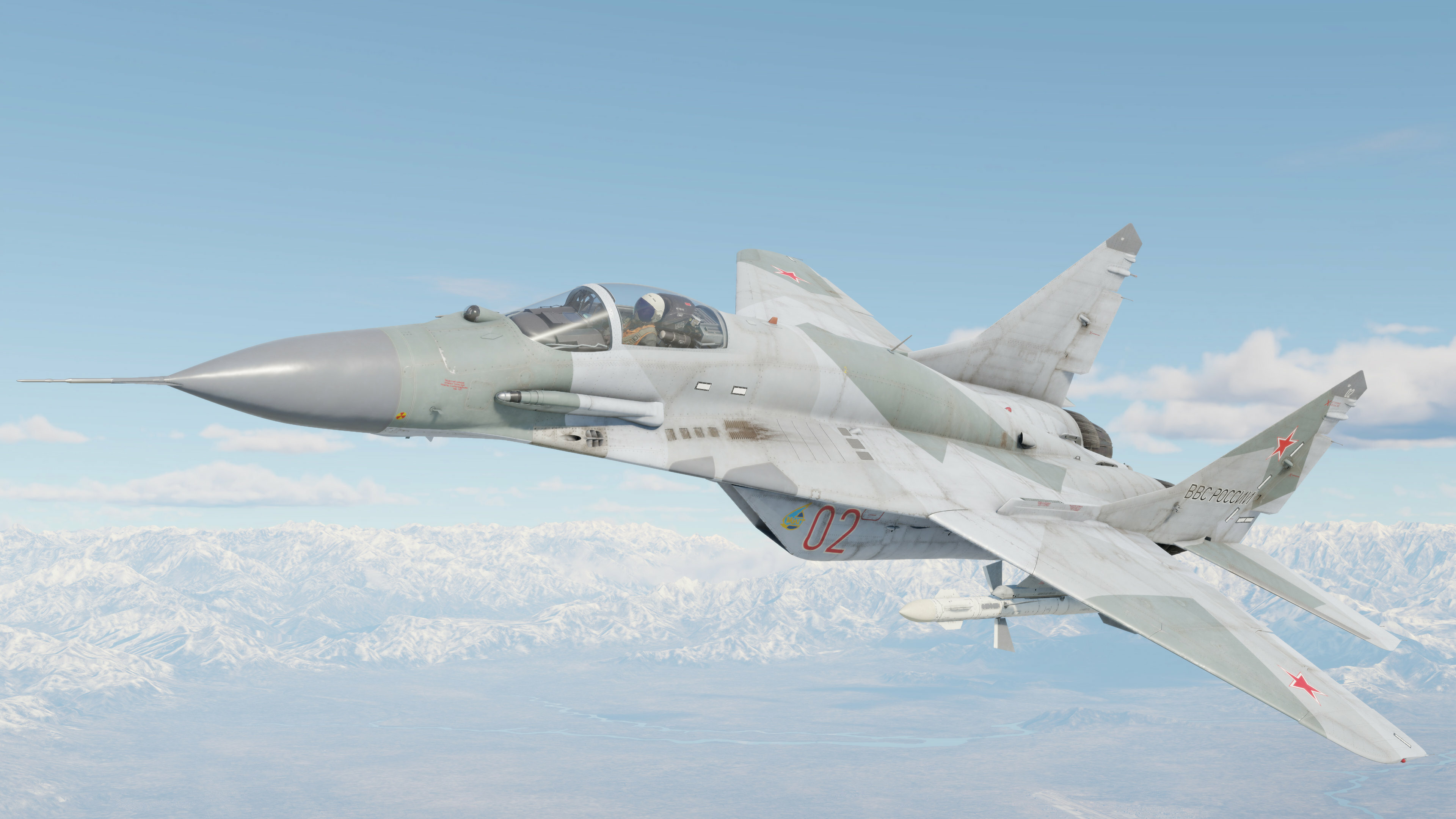
RWR Frequency Bands for Various Aircraft
SPO-2 (Su-7B): I-band
SPO-10 (MiG-21SMT): H-J bands
SPO-15 (MiG-29): G-I bands
Detecteur (Mirage IIIE): I-J band
f95 (Saab A32): I-band
APP-27 (AJ37): E-J bands
APP-73 (JA37): I-J bands
AN/APR-25 (F-4C), AN/APR-36 (A-4E): E, G, I bands
AN/ALR-45 (F-14A): E-J bands
AN/ALR-46 (F-4E): E-J bands
AN/ALQ-73 (F-104S ASA): I-J bands
AN/ALR-56M (F-16A): E-J bands
AN/ALR-67 (F-14B), AN/ALR-69 (A-10A): C-J bands
ARI 18241-1 (Tornado ADV): C-J bands
AN/APR-39 (AH-64A/D): C-M bands
Tracking Mode Detection
Some older warning stations will now be unable to detect the target tracking mode of the radar. The target will be constantly displayed on the indicator but will no longer feature a dashed line or a special continuous audio signal. For more modern RWRs, the active tracking mode will still be indicated by a dashed line from the center of the indicator to the source of the emission, with a “TRACK” message appearing above the indicator.
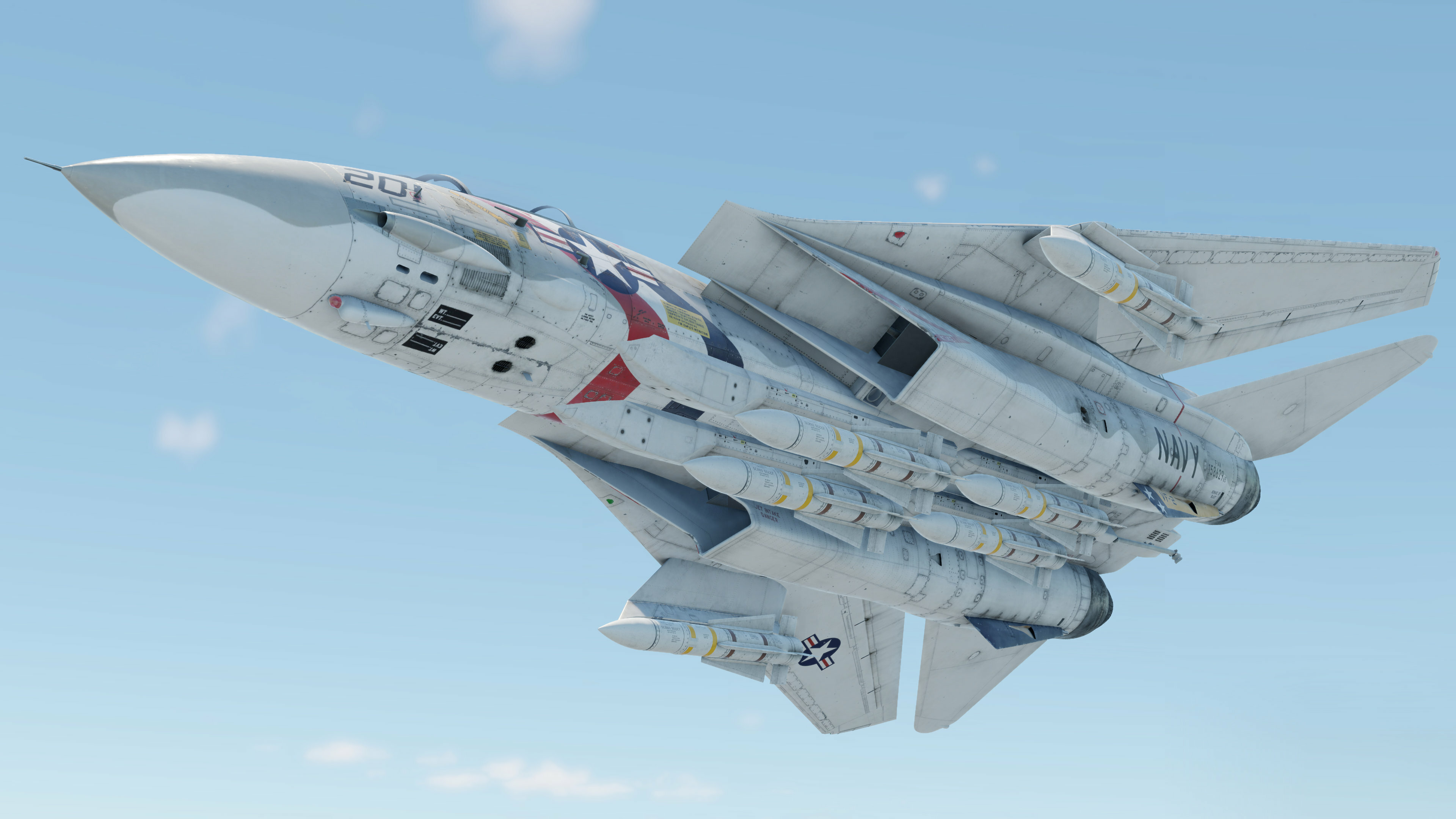
List of stations that have lost the ability to detect tracking mode:
SPO-2 (Su-7B)
SPO Mirage IIIE
f95 (Saab A32)
APP-73 (JA37)
AN/APR-25 (F-4C)
AN/APR-36 (A-4E)
AN/ALR-45 (F-14A)
Detection of Pulse-Doppler Signals
Depending on the generation, some stations don’t have the ability to detect pulse-Doppler signals. Now, in Simulator mode, a number of older RWRs have also lost the ability to detect pulse-Doppler signals. In Realistic and Arcade modes, stations will not be able to directly identify such radars but will still be able to detect them.
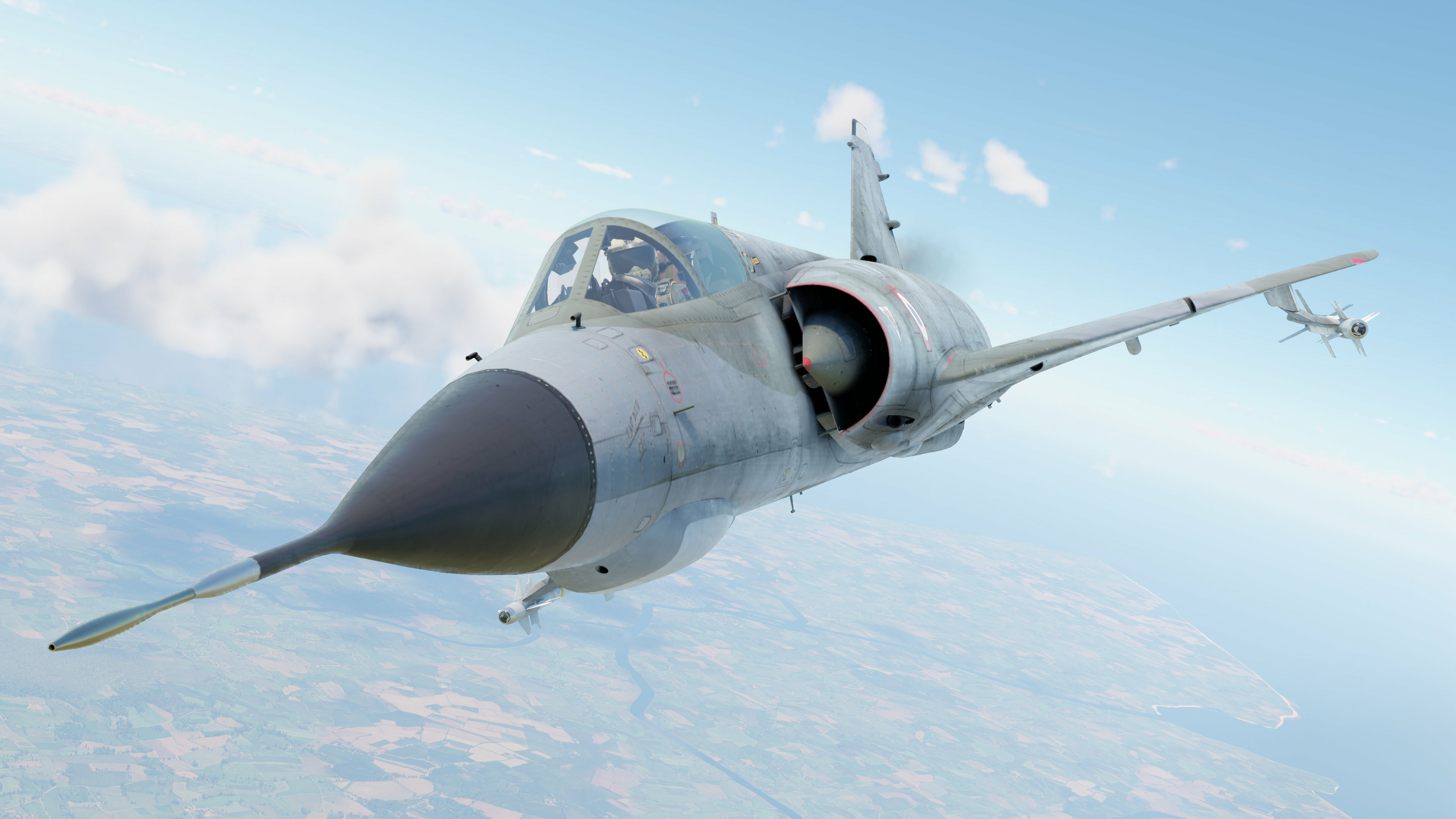
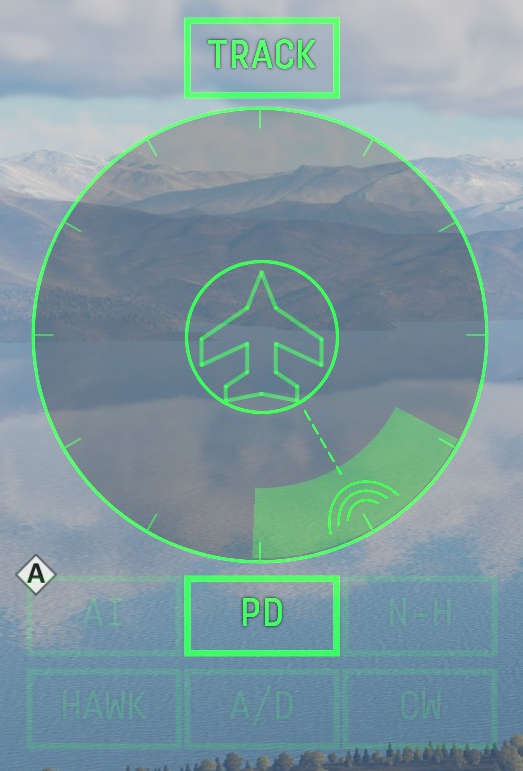
A pilot is warned about the pulse-Doppler signal and its direction.
Here is a list of such stations:
SPO-2 (Su-7B)
SPO-10 (MiG-21SMT)
SPO Mirage IIIE
f95 (Saab A32)
AN/APR-25 (F-4C)
AN/APR-36 (A-4E)
AN/ALR-45 (F-14A)
AN/ALQ-73 (F-104S ASA).
Radar Tracking
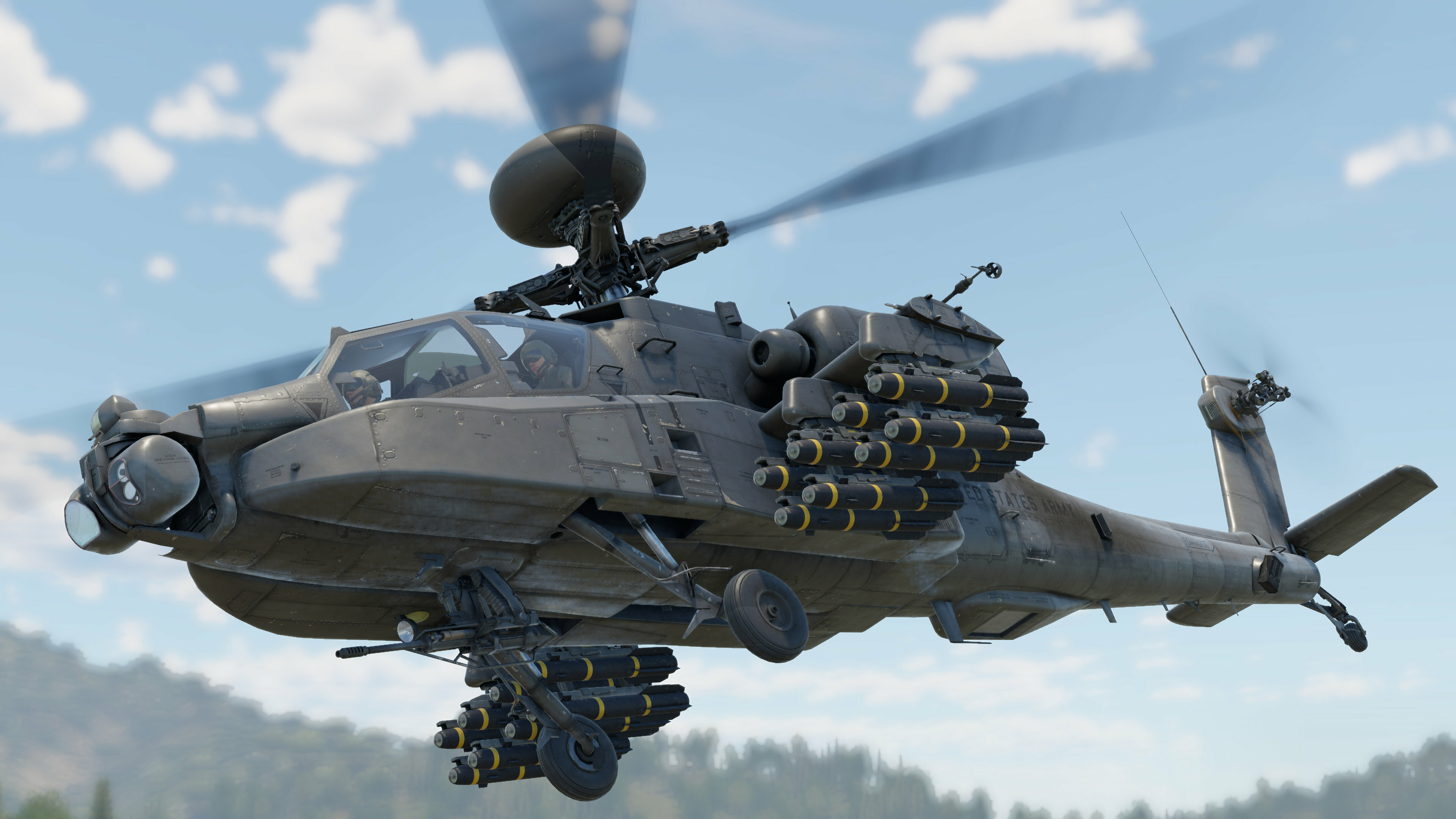
Simple Radar Warning Receivers previously only provided the direction to the signal source each time it was detected. A marker would appear upon signal detection and soon disappear. For more advanced stations, such as the
AN/ALR-46 (F-4E), AN/ALR-56M (F-16A), AN/ALR-67 (F-14B), ARI 18241-1 (Tornado ADV) and AN/APR-39 (AH-64A/D), we recreated tracking for each source and its relative movement on the indicator, with the marker constantly present on the display. When a new target is detected, its marker will be circled.
Target Identification
In reality, some RWRs can, to some extent, identify radar carriers. This capability also depends on the generation and the specific model. For example, older models were completely devoid of identification capability. More modern RWRs through lamp indicators, allowed the opportunity to approximately identify different types of targets, although in situations where multiple targets were involved, it was very difficult to understand precisely which target was identified and in which direction. Finally, the most advanced RWRs can identify targets directly on the indicator. The pilot gets a complete picture of the battlefield, and to avoid overlapping markers in tight arrangements, they blink alternately. It should also be noted that two nearby radars in this case can be identified as one. In the game, depending on the RWR model, targets are identified differently: from signal types and carrier types to identifying specific carriers, for example:
AI (Air-to-Air) - Fighter
PD (Pulse Doppler) - Pulse Doppler Radars
A/D (Air Defense) - Air Defense System
SAM (Surface-to-Air Missile) - SAM System
AAA (Anti-Aircraft Artillery) - Anti-Aircraft Artillery
List of equipment without target identification capability: SPO-2 (Su-7B), SPO-10 (MiG-21SMT), f95 (Saab A32).
Target identification by lighting lamps under the RWR indicator: AN/APR-25 (F-4C), AN/APR-36 (A-4E), AN/ALR-45 (F-14A), SPO-15 (MiG-29), APP-27 (AJ37), APP-73 (JA37), Detecteur (Mirage IIIE).
Target identification on the indicator: AN/ALR-46 (F-4E), AN/ALR-56M (F-16A), AN/ALR-67 (F-14B), ARI 18241-1 (Tornado ADV), AN/APR-39 (AH-64A/D).
Missile Launch Detection
Some RWRs can detect the activation of target illumination channels when a target is locked by radar and illuminated by continuous-wave or pulse-doppler signal for missiles with a semi-active radar seeker. RWRs can also detect radio command transmission for semi-automatic Surface-to-Air missiles like Roland variants, and "Volna," "Tor," "Tunguska" SAMs. Even if the Surface-to-Air Missile (SAM) System operates in radio silence mode, meaning it tracks the target using optics and does not activate tracking radar, the RWR can detect commands sent to the anti-aircraft missile. RWR can also detect emissions from missile active radar seekers like the AIM-54. In the game, on aircraft with such advanced RWRs, pilots will see a blinking dashed line from the center in the direction of the radiation source with the text "LAUNCH" displayed above the indicator.
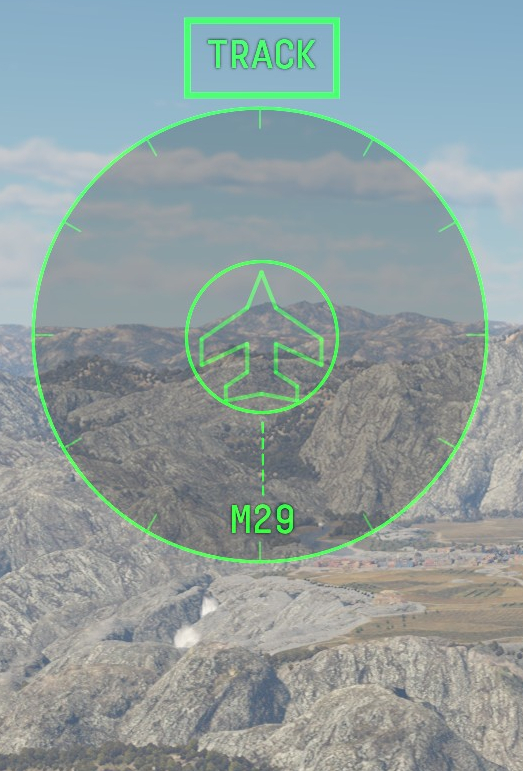
The F-16C is locked on by the MiG-29 radar.
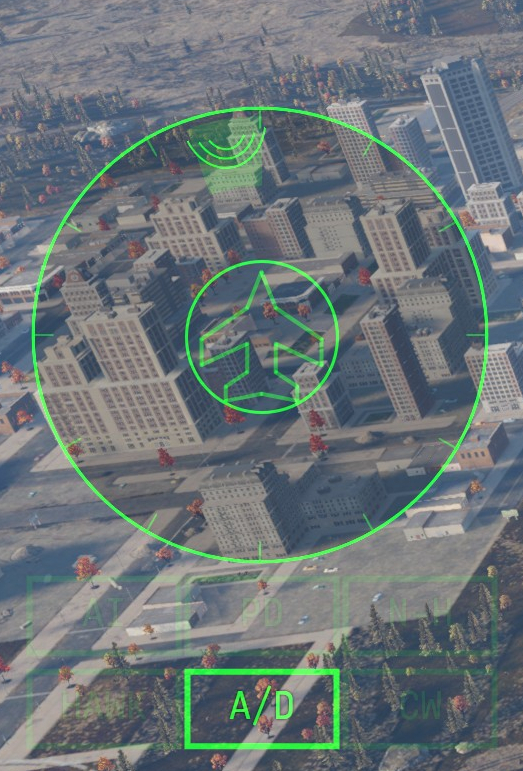
The F-14A detects searching radar of enemy SPA.
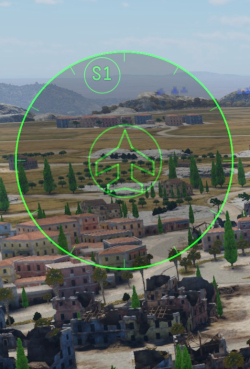
The pilot is aware of an enemy Pantsir-S1 searching radar that is operating nearby.
List of RWRs capable of detecting missile launches with their particulars:
The following can only detect the launch of the S-125, or the "Volna" SAM from the destroyer Bravy.
AN/APR-25 (F-4C)
AN/APR-36 (A-4E)
AN/ALR-45 (F-14A)
The SPO-15 model present on the MiG-29, can detect illumination for radar-guided missiles, such as those used by the F-4, MiG-29, F-16 and F-104 variants.
The following can detect illumination for radar-guided missiles, in addition to Roland SAMs of all variants, as well as "Volna," "Tor" and "Tunguska" missiles.
AN/ALR-46 (F-4E)
AN/ALR-56M (F-16A)
AN/ALR-67 (F-14B)
ARI 18241-1 (Tornado ADV)
AN/APR-39 (AH-64A/D)








